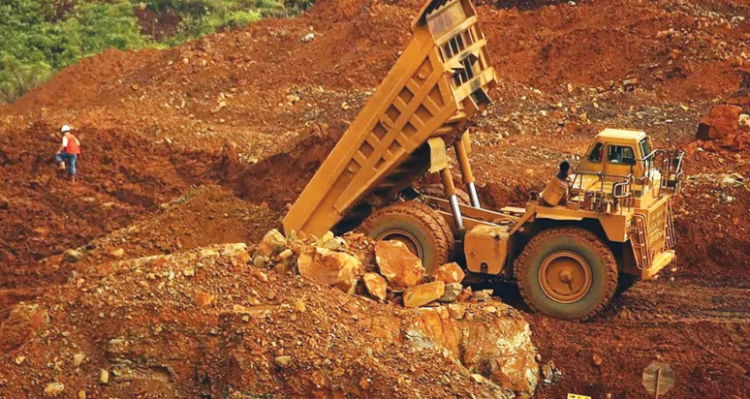misheel@mininginsight.mn
Mining Insight Magazine №05 (018), May 2023
The Minerals Law is being revised and has been discussed publicly for a while. A working group has been receiving comments on the project, and by mid-May, over 1,200 comments had been reported. The bill includes a new chapter called "Important Minerals," and there has been a significant focus on explaining the concept of important minerals during the discussions. In a discussion held on April 5, representatives from companies expressed their desire to understand what important minerals are and why the government approves a list of such minerals. Even more than a month later, the same question was raised repeatedly during another discussion on the revision of the Minerals Law. Mongolia is currently in the process of identifying its important minerals for the first time. In this context, the concept of critical minerals has been introduced, and we are sharing information about minerals that hold significance for countries worldwide.
CRITICAL MINERALS FOR THE UNITED STATES, SOUTH KOREA, AND JAPAN
The International Energy Agency identifies copper, lithium, nickel, cobalt, manganese, graphite, and rare earth elements as critical minerals. These minerals are crucial for carbon-free technologies, renewable energy, and electric vehicles, as they serve as essential raw materials. Critical minerals are vital for future technologies that don't rely on coal. However, the treatment of critical minerals varies across countries, depending on the specific supply and demand conditions they face. During World War I, the United States introduced the term "precious minerals" and listed five specific minerals: tin, nickel, platinum, nitrates, and potassium. These minerals were considered important due to their scarcity within the United States. However, in a recent update, the United States Geological Survey, a government agency, revised the list of critical minerals. Potassium was removed from the list, while nickel was once again recognized as an important mineral. Platinum and tin remained on the list. Nitrates, primarily used in fertilizers and explosives, are no longer considered critical minerals. The inclusion of nickel in the list is justified by its significance in the energy transition, similar to the importance of tin. Both metals are essential as raw materials for wind power turbines. Over 60% of total nickel consumption is attributed to the metallurgical industry.
In 2021, around 10% of the 2.8 million tonnes of nickel were utilized in the production of raw materials for electric cars. As the demand for electric vehicles rises in the future, the importance of nickel will further increase. Assuming that each vehicle requires around 40-50 kgs of nickel, the demand for nickel is estimated to reach 3.8 million tonnes by 2030. Some researchers even predict that the demand for nickel could reach 6.2 million tonnes. This optimistic projection was made by Brazilian researchers. Brazil holds the third position globally in terms of nickel reserves, following Australia and Indonesia. In nickel production, Brazil ranks eighth. To reduce the dominance of the United States and China in the nickel market, a strategic move has been made by investing USD 30 million in the Brazilian company TechMet. Mongolia is believed to possess significant nickel resources, although detailed information about confirmed reserves is lacking. In February of last year, an agreement was reached to form a committee for cooperation in the supply chain of nickel, tin, and other rare metals with South Korea. Simultaneously, South Korea announced its intentions to decrease reliance on China for key minerals such as lithium, nickel, cobalt, manganese, graphite, and rare earth elements. As part of this plan, South Korea aims to reduce its dependence on China from 80 percent to 50 percent by the year 2030.
To ensure the security of critical minerals, the strategy involves forging strong diplomatic ties with countries possessing these resources. Additionally, financial assistance such as loans and insurance will be provided to companies investing in critical minerals.
Among the 33 defined important minerals, 10 are designated as strategically significant raw materials, including lithium, nickel, cobalt, manganese, graphite, and five rare earth elements. Tin reserves continue to hold importance for the United States due to their scarcity. The majority of global tin reserves are found in Asia, particularly in China and Indonesia. However, in terms of exports, Indonesia surpasses other countries, while China ranks fifth. In 2022, the United States is expected to import nearly half of its tin from Bolivia and Peru in the Americas. In our country, tin reserves are estimated to be around 106,000 tonnes. This places our country in the sixth position in Asia and the seventeenth globally in terms of tin reserves. However, there is limited clarity regarding the existence of untapped deposits and how they can be effectively utilized. The International Tin Association predicts a global shortage of 50,000 tonnes of tin starting in 2030. Addressing this issue would require an investment of approximately USD 1.4 billion. Tin is not considered a critical mineral in Japan. However, in collaboration with a Turkish company, a USD 200 million investment was made in a steel plant located in Osmaniye, in the southern region of Turkey, to facilitate tin production. This initiative aims to cater not only to domestic demand but also to the regional requirements within Turkey. Despite this investment, Japan still imported USD 847 million worth of raw tin in 2021, primarily from countries like Indonesia, Malaysia, Thailand, Singapore, and Peru, to meet its domestic needs. The investment in Turkey by Japan is aligned with the development of both countries' tin and metallurgical industries, as well as with the RussiaUkraine policy. As of 2020, Russia held the fifth position globally in terms of unproven tin reserves. Additionally, it accounted for approximately 2.2 percent of the total value of tin exports. In Japan, a total of 32 minerals are regarded as important, with plans to increase the reserves of seven minerals including tungsten, cobalt, and vanadium by 60-180 days. The initial list of critical minerals was released in 1984 by the Mining Council Committee under the Ministry of Economy, Trade, and Industry. Over time, palladium has been removed from the list, while minerals such as fluorine and silicon metal have been included. In this regard, the determination of what should be classified as important minerals has been made by government ministries and implementing agencies, aligning with the overall government policy. The International Energy Agency (IEA) is an intergovernmental organization comprising 31 countries, including the United States, South Korea, and Japan. While the IEA can be seen as a collective decision-making body of these governments, it is the individual member countries that determine which elements are deemed important based on their unique characteristics and circumstances. It is important to note that the official membership of the IEA does not currently include Russia and China. Initially, countries primarily viewed certain minerals as crucial for defense purposes, resource availability, and addressing supply shortages. However, with the ongoing energy transition and technological advancements, the concept of critical minerals has expanded to encompass a broader range of minerals and raw materials. This evolution is evident in historical instances such as the United States during World War I and Japan in 1984, which aimed to mitigate resource scarcity through technological development. Similarly, more recent examples include South Korea's identification of important minerals and strategically significant minerals, driven by the objective of reducing heavy reliance on China.
WHAT MINERALS ARE IMPORTANT FOR MONGOLIA?
Mongolia is taking steps to legalize important minerals for the first time. While domestic resources may be limited, it may not be ideal for the country to solely focus on identifying minerals that are necessary or important for the economy. This is because Mongolia's economy heavily relies on three minerals, namely coal, copper, and gold, which constitute a significant portion of its export value and contribute to the overall economy. These minerals are already wellestablished and readily available in the country. To attract investments, our country can consider importing minerals that are deemed important by neighboring countries and other significant partners. However, we must assess our mineral resources based on the perspectives of our neighboring nations, the concept of the "third neighbor," and, most importantly, the best interests of our own country.
Mining Insight Magazine №05 (018), May 2023



























